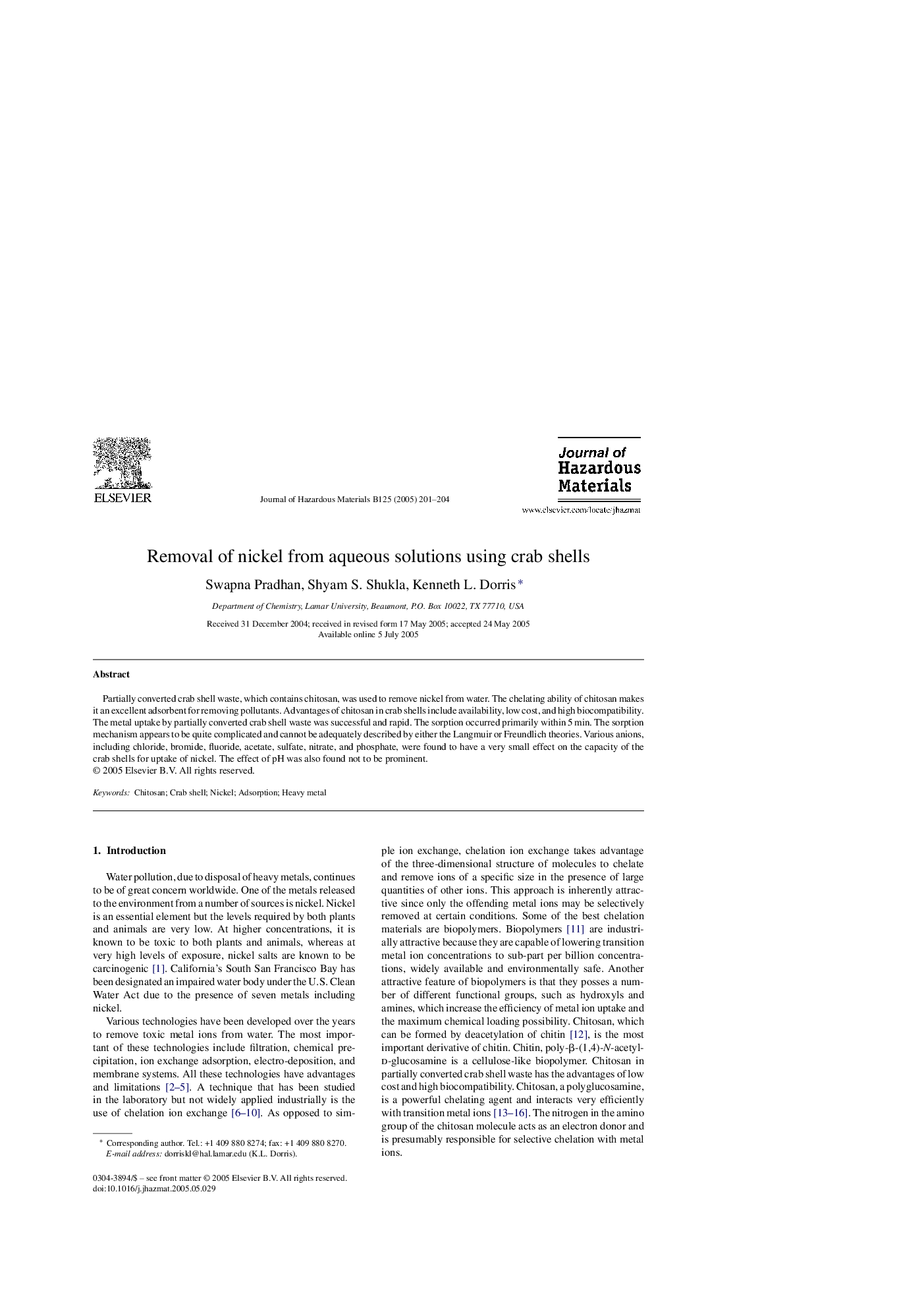| Article ID | Journal | Published Year | Pages | File Type |
|---|---|---|---|---|
| 9674136 | Journal of Hazardous Materials | 2005 | 4 Pages |
Abstract
Partially converted crab shell waste, which contains chitosan, was used to remove nickel from water. The chelating ability of chitosan makes it an excellent adsorbent for removing pollutants. Advantages of chitosan in crab shells include availability, low cost, and high biocompatibility. The metal uptake by partially converted crab shell waste was successful and rapid. The sorption occurred primarily within 5Â min. The sorption mechanism appears to be quite complicated and cannot be adequately described by either the Langmuir or Freundlich theories. Various anions, including chloride, bromide, fluoride, acetate, sulfate, nitrate, and phosphate, were found to have a very small effect on the capacity of the crab shells for uptake of nickel. The effect of pH was also found not to be prominent.
Related Topics
Physical Sciences and Engineering
Chemical Engineering
Chemical Health and Safety
Authors
Swapna Pradhan, Shyam S. Shukla, Kenneth L. Dorris,
